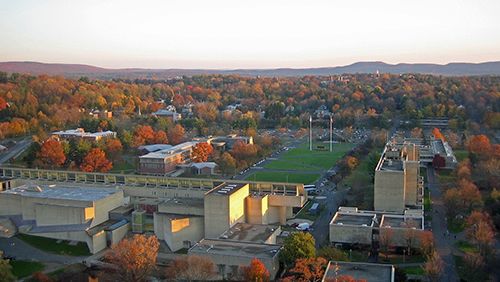The Massachusetts Gaming Commission has provided a $1 million per year grant over the next three years to the University of Massachusetts (UMass) to investigate casino gambling’s impact in the state. The grant will allow the school to specifically study the economic and social impact in the Springfield and Boston Harbor areas.
This study marks the final piece of a 12-year investigation entitled “Social and Economic Impacts of Massachusetts.” The UMass Amherst School of Public Health and Health Sciences was responsible for the research, with the final part of their study focused on MGM Springfield and Encore Boston Harbor.
The findings of the Springfield study will be released either in the spring or summer this year. The Encore Boston Harbor assessment will be released in the fall.
Lead investigator Rachel Volberg said “this will continue to be the longest-lasting study of the impacts of the introduction of a new form of gambling in a jurisdiction. What’s going to be most interesting going forward is being able to have a fine-grained understanding of the disparate impacts that introducing different kinds of casinos has on communities that are differentially at risk of experiencing gambling-related harms.”
The Amherst campus concluded its most recent survey in September of last year. That was on the Plainridge Park Casino, which opened in the summer of 2015.
The team studied the facility from 2015 through 2016, two years before the two largest resort-casinos in the state opened. Volberg pointed out that the study provided a great deal of valuable information for state agencies:
“Although this report focuses on results from before the opening of MGM Springfield and Encore Boston Harbor, we have already learned a great deal about how gambling problems among Massachusetts adults develop, progress and remit – information that will assist the Gaming Commission and the Department of Public Health in crafting the right mix of prevention, intervention, treatment and recovery services to effectively minimize and mitigate gambling harm in the Commonwealth.”
Three major conclusions were determined by the study, including that those who were already gambling were unlikely to stop. “On the prevention side, it suggests that it’s important to provide people with tools to manage their gambling so it doesn’t become problematic.”
The study also found that the rate of problem gambling was at about 1.2%, the same results found in other jurisdictions. It also found that the remission rate, those who had a problem with gambling but no longer do, was at 44%, slightly higher than what was expected.
Volberg recently explained that she’s interested to see how the results compare to the new study, especially in light that the two facilities being studied are much larger than the Plainridge Park casino.






